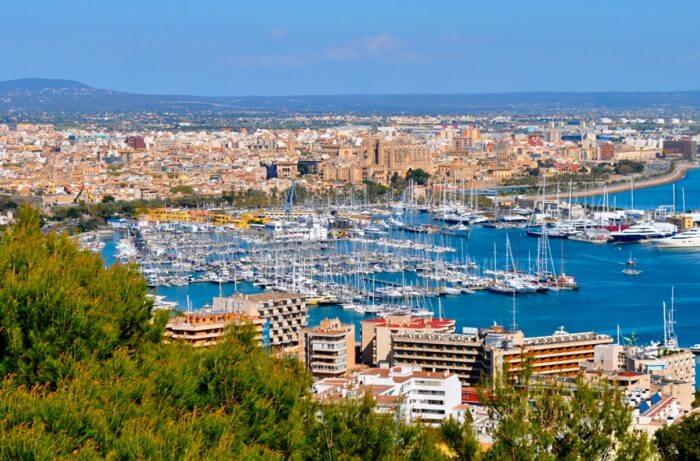Spain — tourists from all over the world talk with awe about its world-class beaches, rich culture, and fantastic cuisine. But it’s not just the mainland that attracts travelers. The country is also famed for its island territories. Whether you are looking for long walks among fantastic landscapes, want to take part in non-stop parties, or dream of solitude and quiet time by the sea, the islands of Spain offer vacation opportunities for every taste.
Mallorca
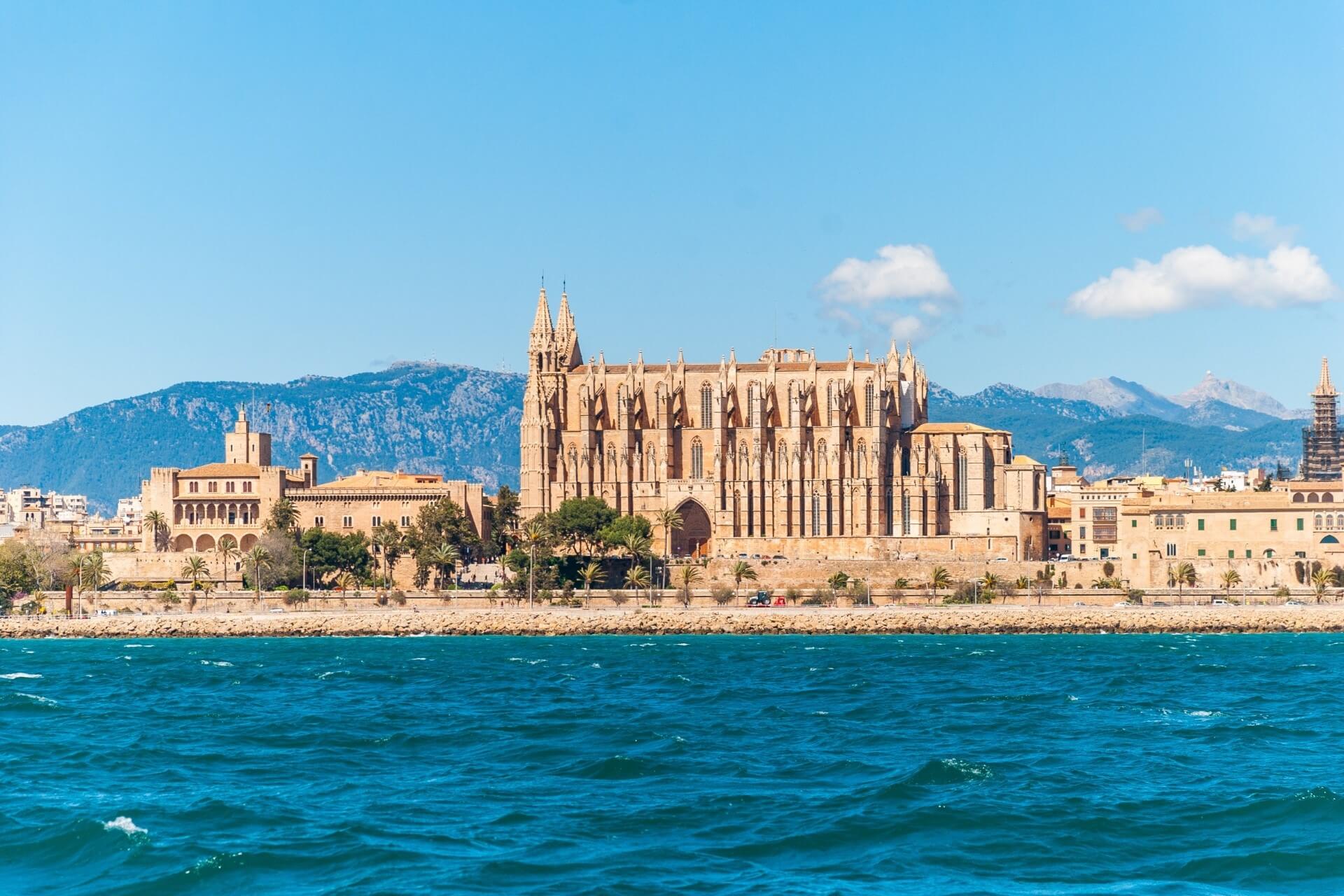
The largest of the Balearic Islands scattered in the Mediterranean Sea, Mallorca is a heady mix of bohemian laissez-faire and club parties, well-groomed sandy beaches, and wild rocky shores, modern architecture, and magnificent Moorish palaces.
It’s the perfect place for a vacation. The 554 km of beaches attract not only fans who love to bask in the clean sand but also diving enthusiasts and those who want to sail. Mallorca is also rich in attractions, including the Gothic Cathedral of Palma, the Spanish Village in Son Espanyolet, and the Carthusian Monastery in Valldemossa.
Art lovers should not miss the Joan Miró Foundation. The museum of the famous artist includes his studio and an exhibition of his paintings. Still pondering a trip to Mallorca? Here’s the final argument: this island is a favorite vacation spot of the Spanish royal family.
High-ranking persons stay at the Marivent Palace, whose picturesque palace gardens are open to all visitors. The annual six-day event, a spectacular regatta, is timed to coincide with the royal vacation, which always takes place in August. King Felipe VI himself takes part in the races.
Menorca
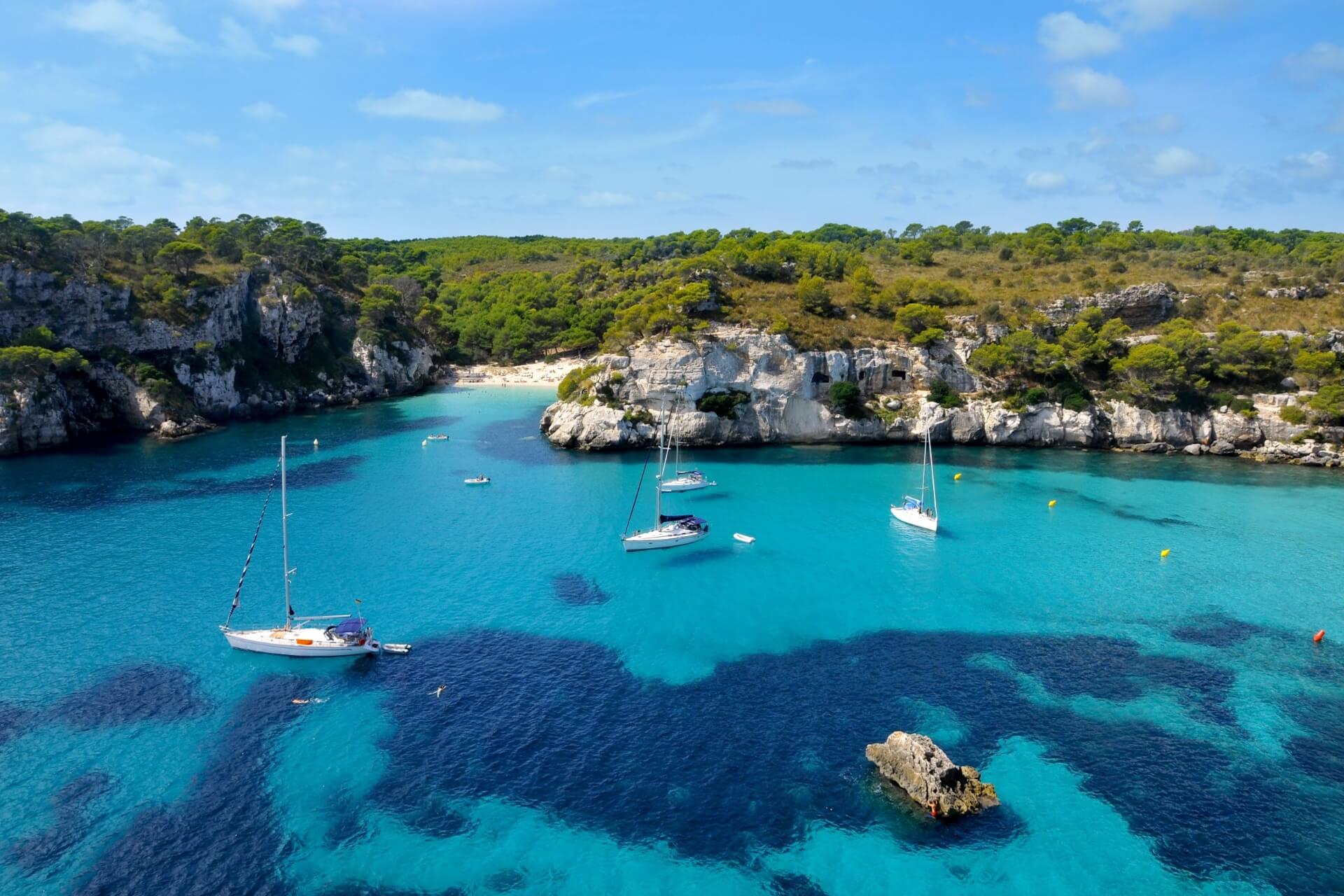
Known primarily as a UNESCO Biosphere Reserve, Menorca is covered with dense primordial forests, where the construction of high-rise buildings is prohibited. Perhaps this is why it is not crowded even at the height of the tourist season.
Menorca is for those who prefer a measured rest away from the city noise. Here you will discover paradise: a beautiful coastline with whimsical rock formations, green heather thickets, secluded coves, and wide sandy beaches with playgrounds that will delight young tourists.
Adults should visit the famous cave systems and delve into the secrets of producing unique Menorcan gin Xoriguer in the wineries of the capital, Maó. Menorca is popular among horse riding enthusiasts. Routes are designed for travelers to get acquainted with the unique flora and fauna.
Divers are also fond of this place. The goal for diving enthusiasts is the Cala Blanca resort. Its waters are crystal clear — even at a depth of 30 meters, you can see the inhabitants of Neptune’s kingdom in detail.
Ibiza
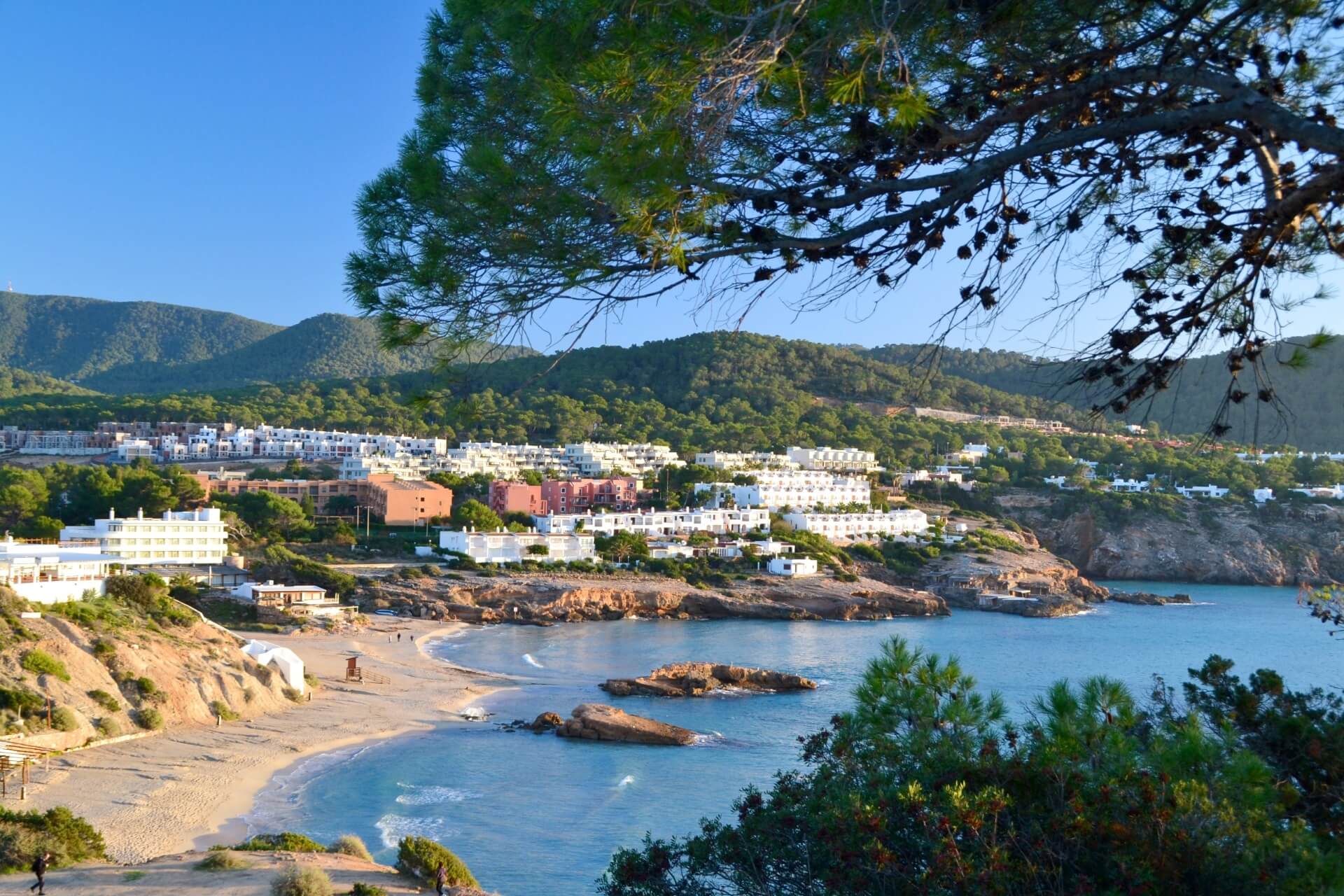
If your friends returned from a vacation in Spain happy but with no tan, know they were in Ibiza! This island, rightfully bearing the title of the capital of youth subcultures, attracts visitors not for sunbathing and relaxing by the sea. People flock here to participate in fun parties and visit world-famous discos.
The resorts of music-filled Ibiza are dotted with colorful restaurants, whimsically decorated houses, and architectural monuments from Carthaginian and Phoenician times. Along the promenades of cozy towns, you will find hotels, shops, open bars, and, of course, popular clubs, the most famous of which are Amnesia, Privilege, El Divino, Ushuaia, and Pacha.
If you find a couple of free hours between endless dances, visit the beaches where you will be greeted by golden sand, crystal clear water, and diving schools. Or explore local attractions: the 1585 Taules Gate Fortress, the 13th-century Cathedral, the ancient Puig des Molins necropolis, and the Ses Salines Natural Park.
Formentera
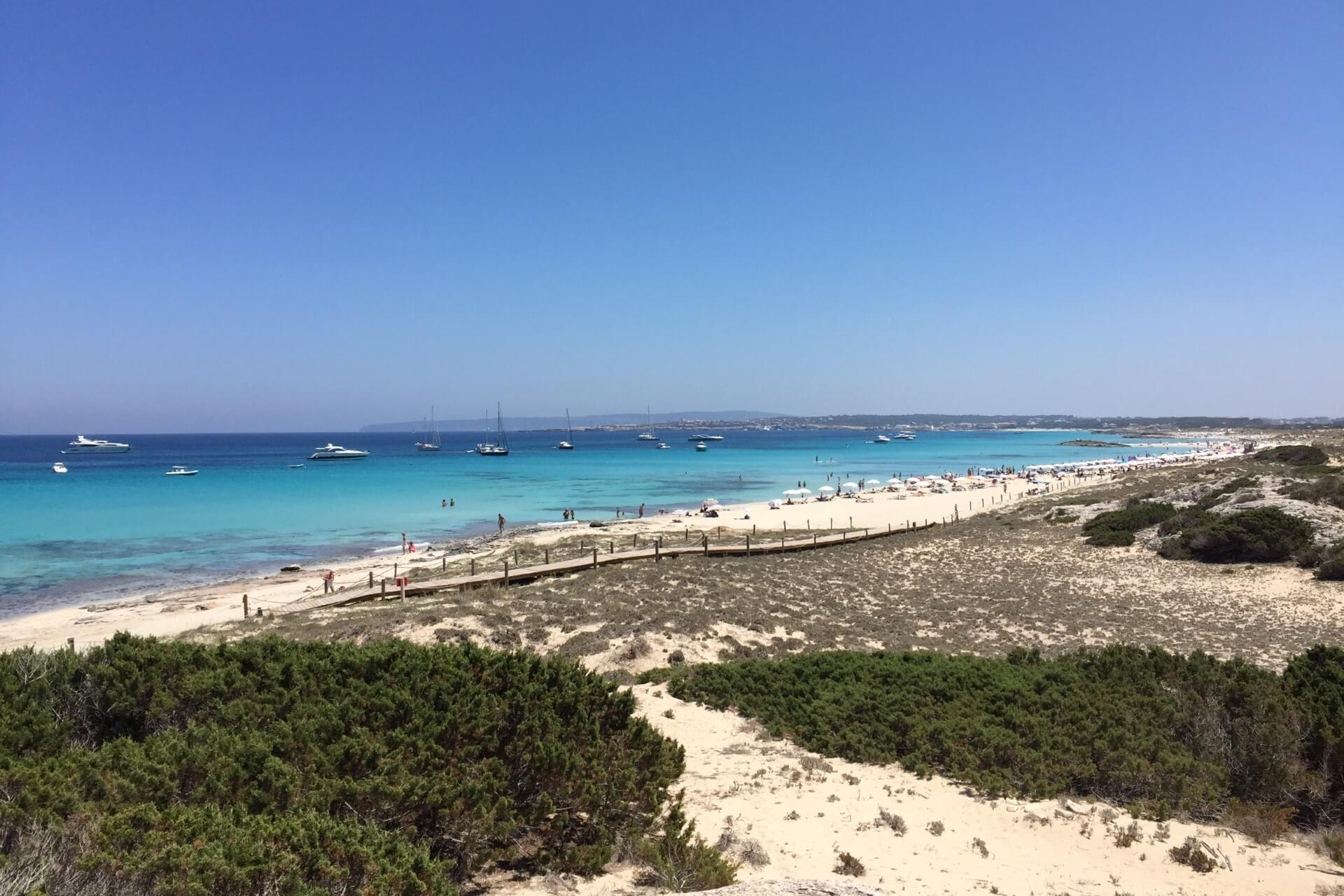
Formentera is the opposite of noisy Ibiza. This tiny island, a rocky plateau of just 83 km², welcomes its guests with ringing silence and peace. Not everyone will enjoy a vacation here. Party lovers will be disappointed by the lack of youth gatherings, and families with children might not appreciate the abundance of nudists.
Amusement parks, historical landmarks, shopping, and social life — you will not find any of this on Formentera. People come here dreaming of a clean coastline, endless wide beaches covered with white sand, meditation, yoga, and complete solitude. For active travelers, there are diving centers and cycling routes through fishing villages and fig tree groves.
One of the favorite activities for tourists is tasting seafood in local cafes and restaurants. Even gourmets vacationing on the mainland visit Formentera to savor the famous grilled lobster, prepared according to a special recipe.
Cabrera
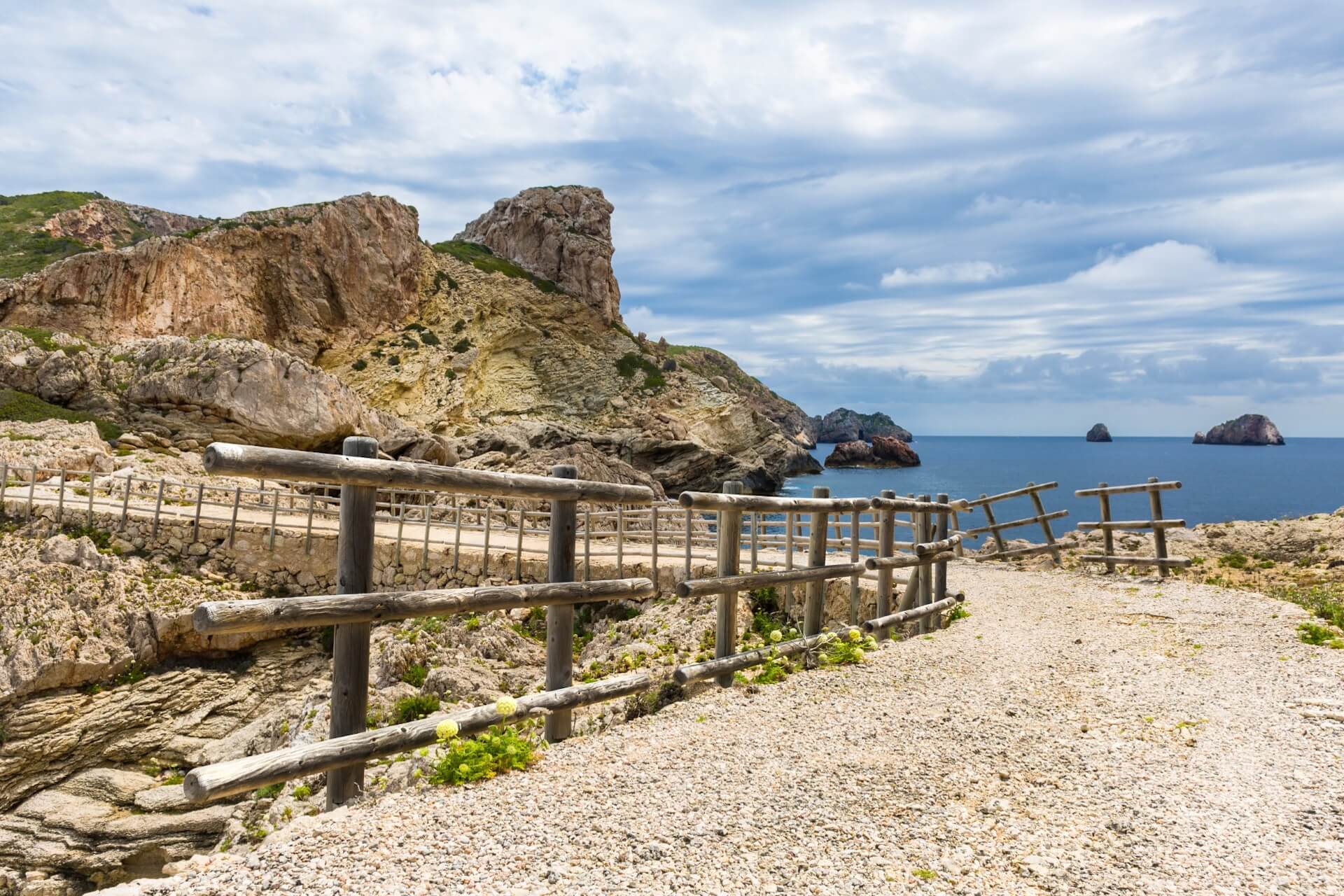
The only Spanish mixed marine and land reserve is the Cabrera archipelago, consisting of 18 tiny islands. There are no hotels, restaurants, or entertainment centers here. The owners of this land are endemic plants (559 species), Balearic lizards, and colonies of seagulls, cormorants, and shearwaters.
Human-made attractions on Cabrera include the ruins of a Byzantine necropolis, the remains of barracks for captured Napoleonic soldiers, and a stone castle built in the 14th century to protect against pirates. The transparent waves of the Sa Platgeta beach conceal an amazing world where giant algae grow, and dozens of fish in all rainbow shades dart among corals, mysterious caves, and dark tunnels.
After diving, enthusiastic divers can enjoy an iced coffee prepared in a coastal bar under a thatched roof. The disappointing part: the magical day ends with the horn of the departing boat. Tourists are prohibited from staying overnight in this green Eden.
Gran Canaria
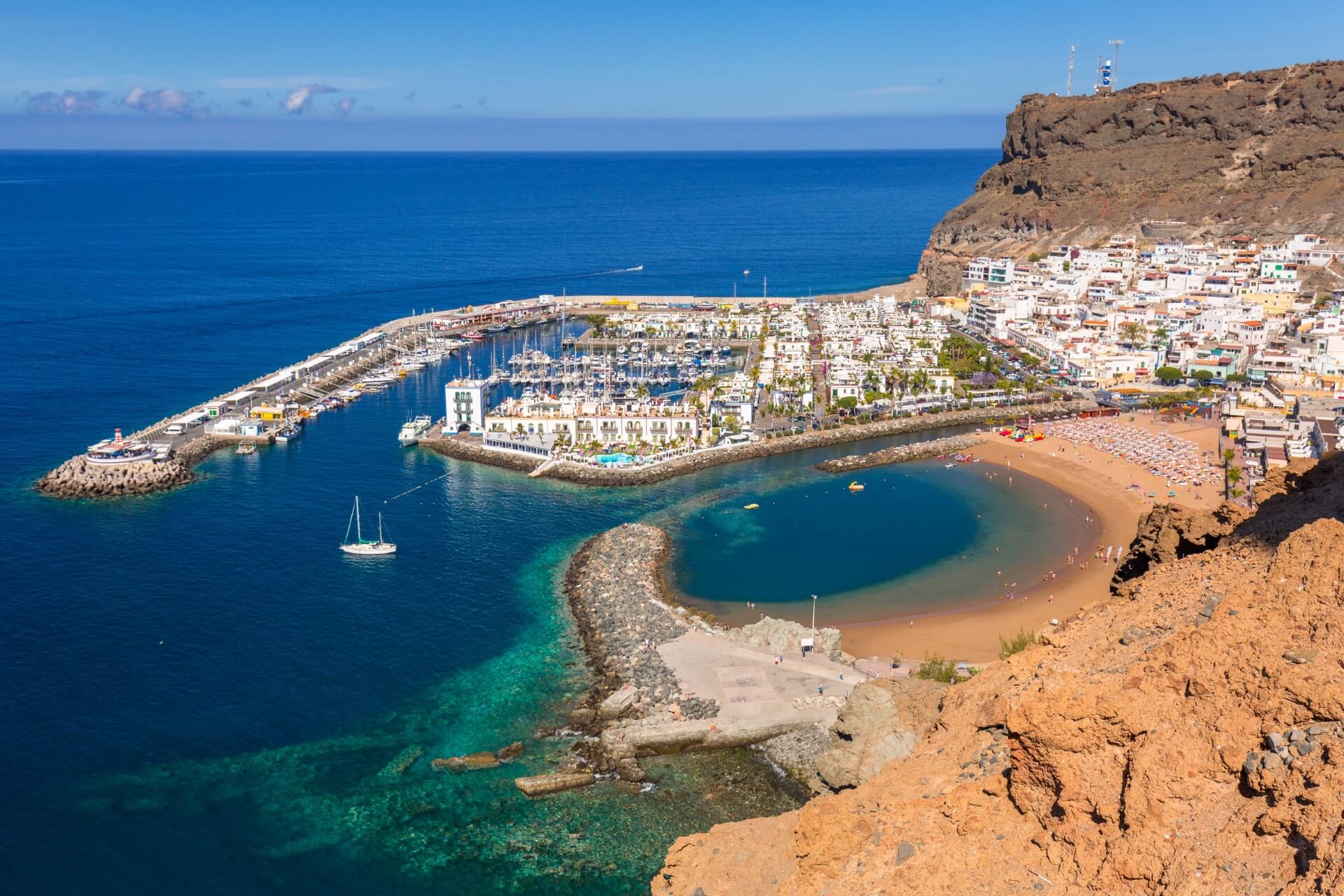
Almost no rain, 350 sunny days a year, and the splendor of diverse landscapes make Gran Canaria a paradise for tourists. A mountain range runs through the island, creating 14 microclimatic zones.
A journey through this multifaceted region allows you to see subtropical forests, snowy peaks, rocky shores, green valleys, and extinct volcanoes. This place can fulfill any traveler’s desires.
Families with children will love the gentle coast of Maspalomas and the wind-protected Puerto Rico beach. Adventure seekers will be thrilled by deep gorges, pine forests, and remote villages reachable only by winding roads that wrap around the mountains.
Those who don’t want to leave familiar urban streets even while on vacation will be welcomed by the capital, Las Palmas, full of shops, restaurants, museums, and entertainment centers. There is no shortage of hotels on Gran Canaria either. Among the 3,842 hotels, there are luxurious five-star hotels and budget three-star ones. Private guesthouses and apartments are a cost-effective option for budget-conscious tourists.
Tenerife
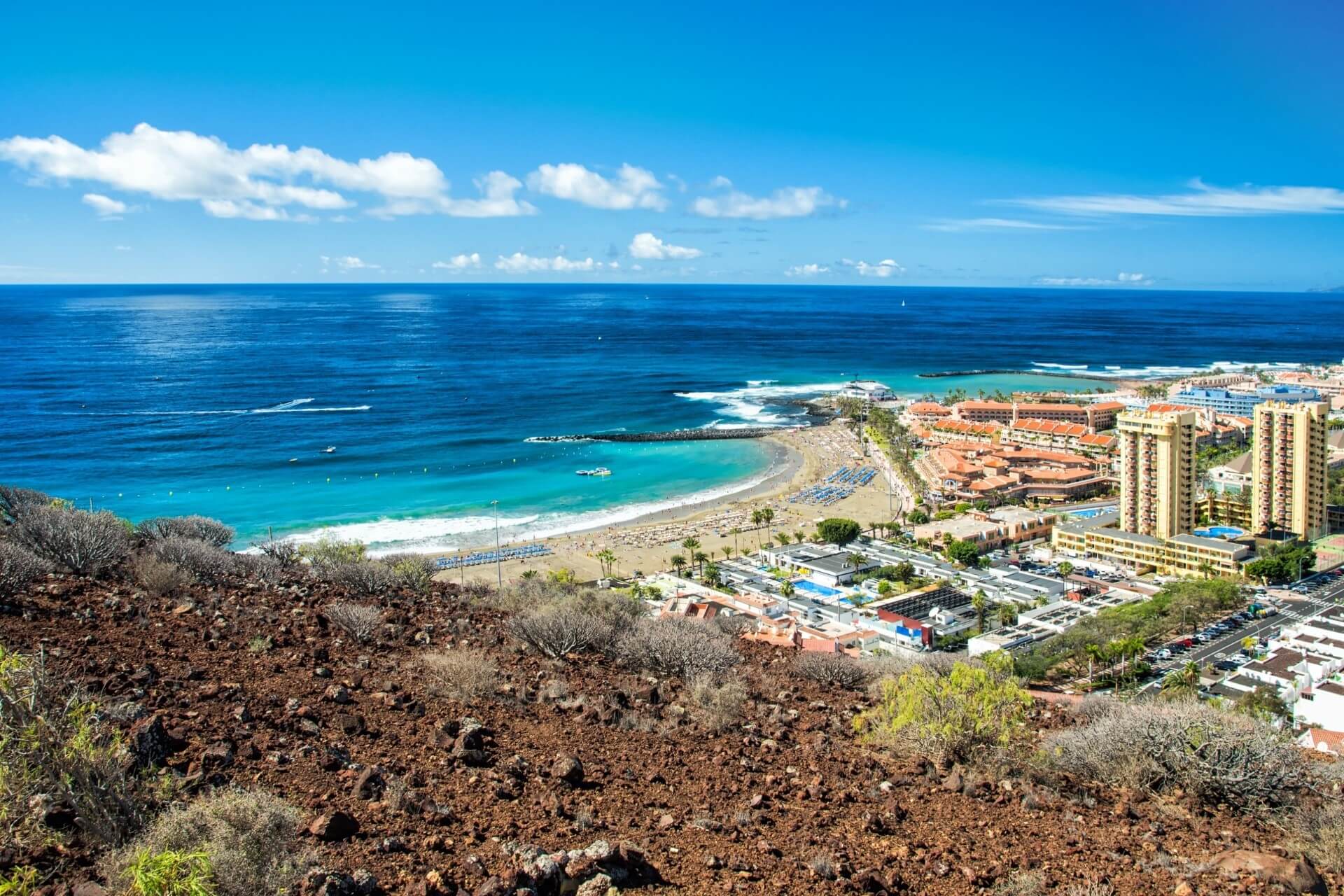
Nowhere else in the Canaries offers such a variety of landscapes as Tenerife. Here you will find beautiful sandy beaches and impassable cliffs, whimsical mountain ranges and fertile fields, lost villages, and old colonial towns.
Tulips and poinsettias, standing a meter tall, turn the island into a blooming Eden. And towering over all this magnificence is Spain’s highest mountain — the 3,718-meter dormant volcano Teide. The diversity of Tenerife’s beaches will surprise even seasoned tourists. The bright yellow coastal zone near Santa Cruz contrasts sharply with the black volcanic sand of the Los Gigantes resort.
Playa del Duque in Costa Adeje, with its calm ocean waves, is perfect for families with children. A completely different scene unfolds in El Medano. The constant trade winds attract windsurfers from around the world.
Tip: Don’t limit your vacation to just the beach and take a trip to the Guimar Desert. Its main attraction is six ancient pyramids. Scientists still have not determined when, by whom, or for what purpose these unusual structures were built.
Another famous place, Siam Park, offers a different kind of entertainment. Numerous diverse water slides (including the 28-meter Tower of Power) make it one of the best water parks on the planet.
Fuerteventura

Don’t be alarmed when you first arrive in Fuerteventura. On the way from the airport to the hotel, you may be unpleasantly surprised by the barren landscape, reminiscent of the lifeless valleys of Mars. But don’t worry. A few more kilometers, and you will see the azure canvas of the magnificent ocean, which will make you forget about the unimpressive scenery.
The barren land, located 115 km from the African continent, has endless beaches. Fine light sand stretches to the horizon, filling 50 km of the coastline. This is why the second-largest island in the Canary archipelago is considered a true Mecca for sea wave and sunbathing lovers. This place is also ideal for windsurfing, skimboarding, and fishing.
A beach vacation in Fuerteventura can be diversified with a trip to Oasis Park, home to giraffes, antelopes, flamingos, parrots, and shows featuring crocodiles and sea lions. The picturesque village of Las Playitas, with its white houses adorned with blue ornaments, will remind you of Andalusia, while the ancient village of Antigua will surprise you with working windmills.
Lanzarote
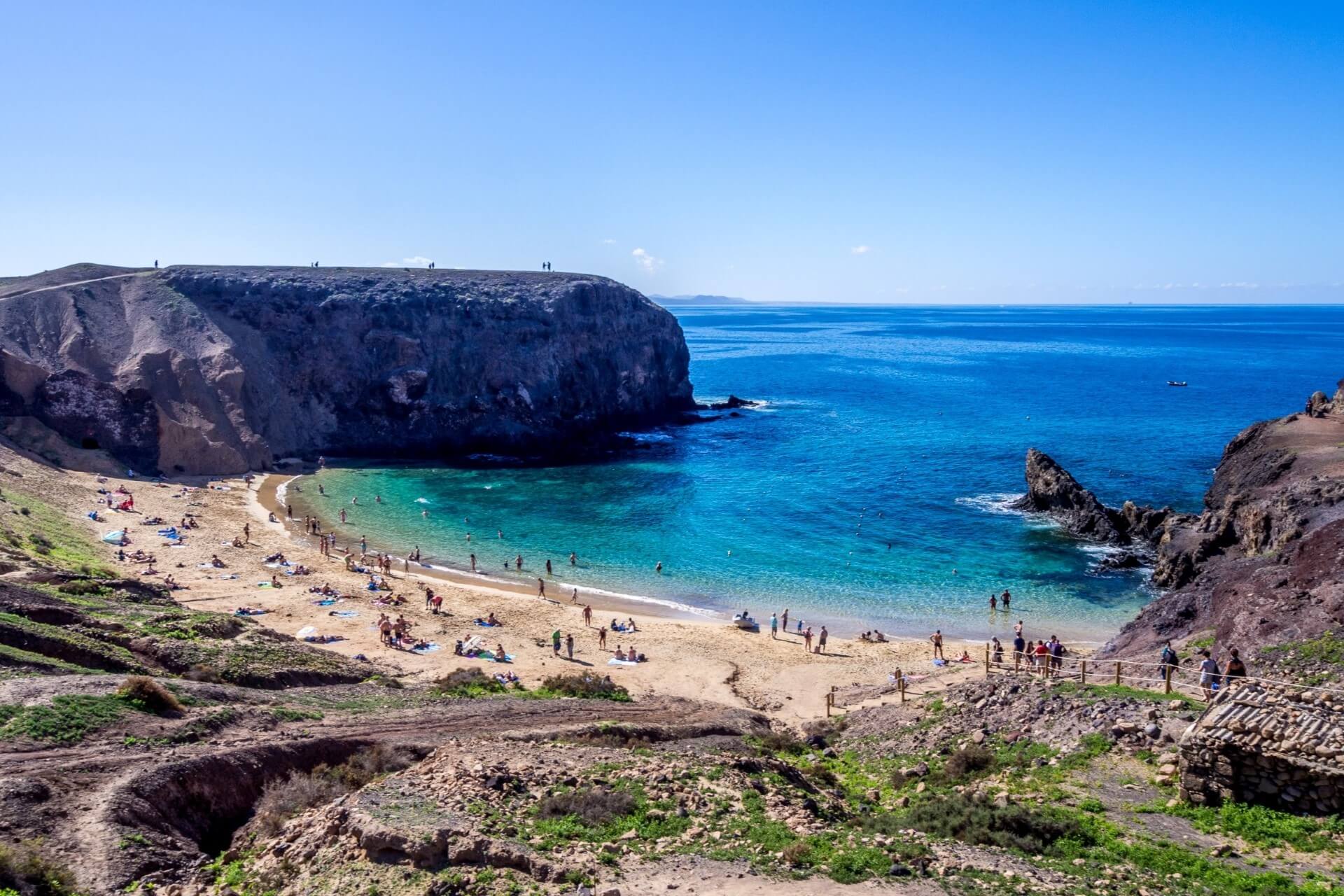
Lanzarote is the “fiery” island of the Canaries. About 300 years ago, almost a quarter of its territory was buried under lava and ash from an erupting volcano, turning the once green land into moon-like craters. At a depth of 15 meters, molten magma still boils.
Timanfaya Park employees show amazed tourists how hot the ground is: a bucket of water poured into a buried pipe shoots up as a scalding steam fountain within seconds. Lanzarote does not have a developed infrastructure or premium “all-inclusive” hotels.
Most visitors aim to get acquainted with hundreds of volcanoes. Seeing the black craters against the blue sky, descending the ash-covered slopes, and touching solidified lava is allowed only as part of bus or walking tours. The most daring can explore the beauties of the national park while riding a camel.
Against the backdrop of towering craters, the picturesque coast is a truly breathtaking sight. Especially beautiful is the El Papagayo beach in the southern part of Lanzarote. The quiet bay is protected from the wind by steep cliffs, so nothing interferes with sunbathing on the golden sand or basking in the emerald ocean waves.
La Palma
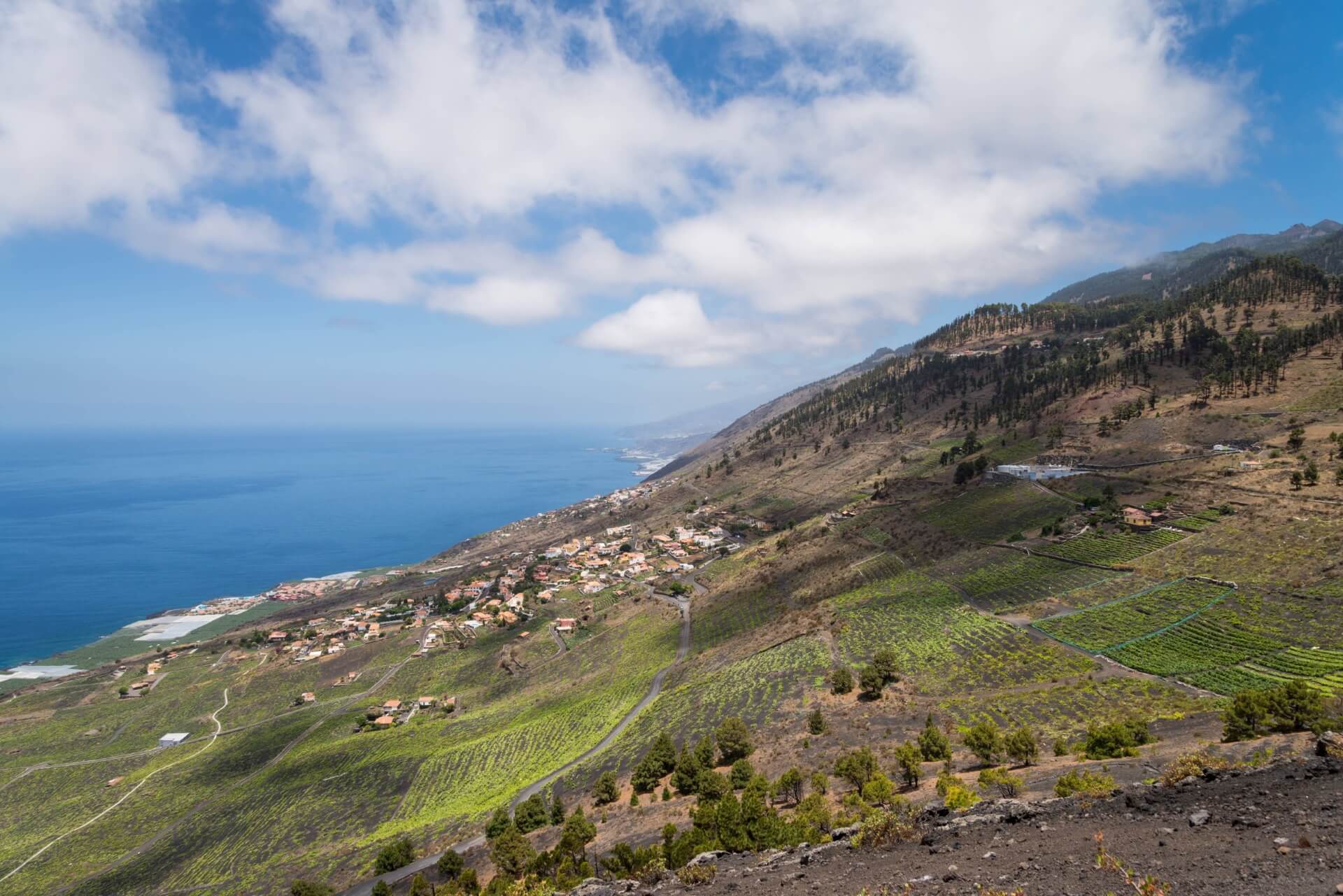
With its vivid colors, mountain ranges covered in dense laurel and pine forests, and the world’s largest volcanic crater, blooming La Palma captivates its visitors. This place attracts lovers of tranquility and relaxed rest, seeking complete harmony with nature.
It’s also popular among hiking enthusiasts. For those not afraid of long walks, many hiking trails are laid out on La Palma. You can tickle your nerves by climbing to the crater of the dormant Teneguía volcano or get acquainted with exotic butterflies and birds in the Palmitos Park.
To rest weary legs and discuss what you’ve seen over a cup of the national drink barraquito (coffee with condensed milk and liqueur), we recommend one of the restaurants in the lively Charco Azul resort.
La Palma’s coastline consists of steep cliffs descending to the Atlantic Ocean, so there are few swimming spots. Those who want to swim and sunbathe on the gray volcanic sand should choose the western tip of the island.
The most famous local beach, surrounded by coconut palms, is Puerto Naos, equipped with comfortable sunbeds, showers, changing rooms, and bars.
La Gomera
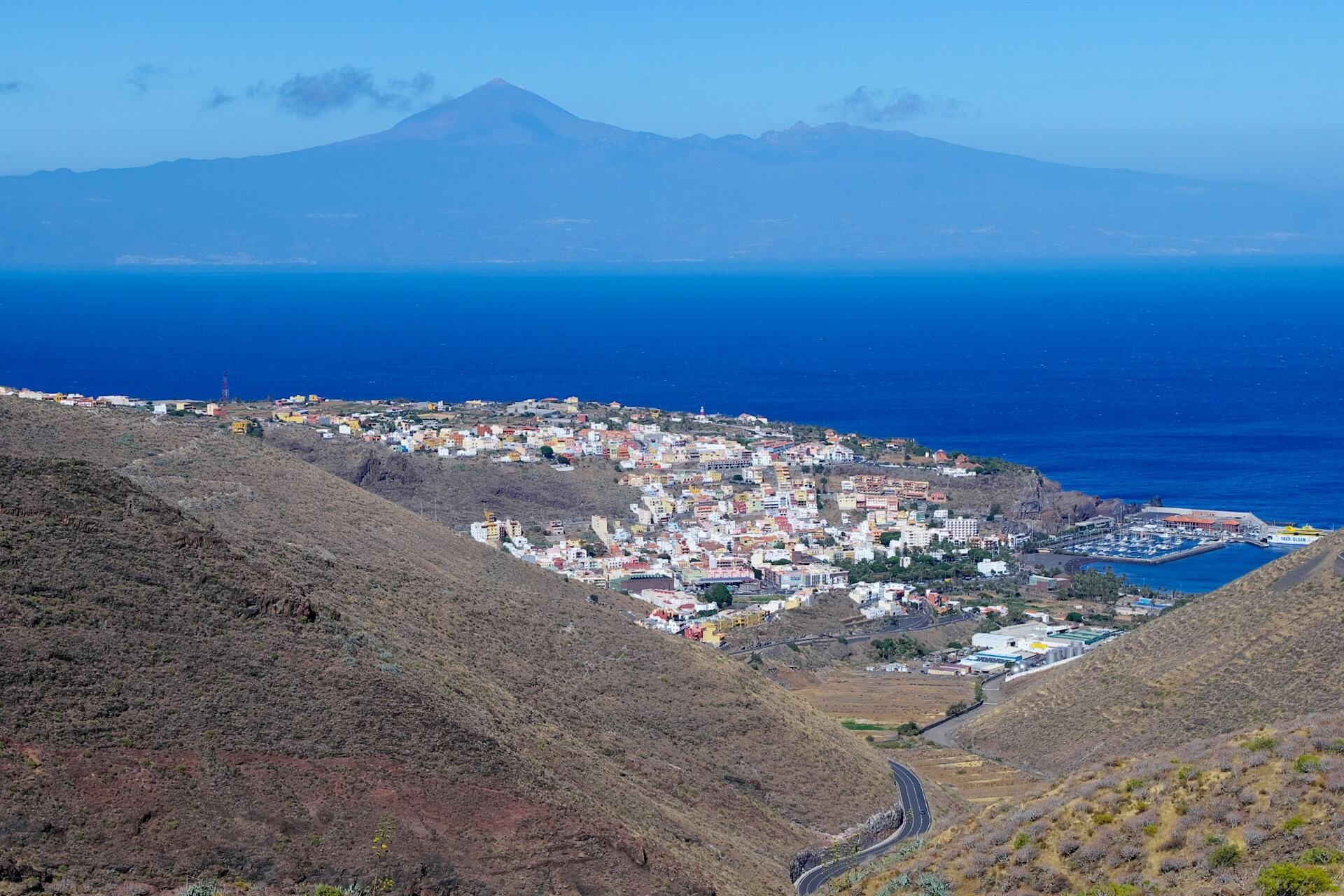
On one of the smaller Canary Islands, from where Columbus began his search for a sea route to India five centuries ago, you won’t find luxury hotels. Visitors to La Gomera choose between inexpensive hotels, apartments, and guesthouses for lodging.
There’s no airport here either — the former land of hippies and hermits can only be reached by ferry from Tenerife. Basalt columns, steep passes, terraced fields, and palm groves create a unique landscape. Essentially, La Gomera is a single mountain range.
Every walk here turns into a grand journey. Long hiking trails lead through banana plantations, wild ravines, and green valleys to the summit of Garajonay rock at an altitude of 1,487 meters. The main local attraction — the national park — is home to relic laurel trees that have been growing on Earth for millions of years.
There are few beaches on La Gomera. The most popular is the 1.5 km long Playa de Santiago. Playa del Inglés impresses with its wild romantic charm, and for children, the quiet Charco del Conde lagoon is ideal.
El Hierro
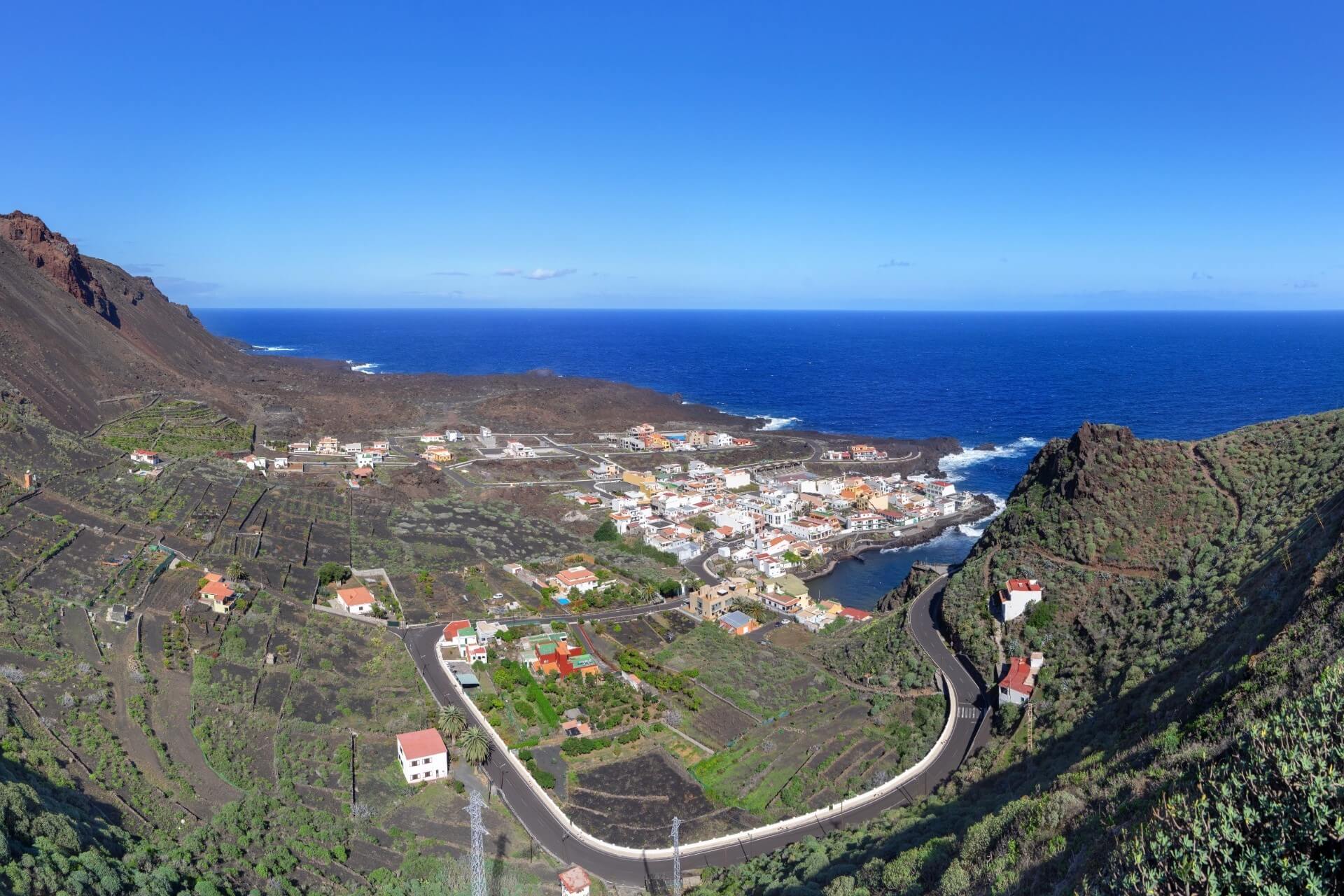
The island stretching 24 km from north to south and 27 km from east to west is the smallest in the Canaries. It seems that time has stopped on this fairy-tale land located at the edge of Europe.
A vacation on El Hierro will seem boring to those who appreciate the noisy hustle and bustle of metropolises, social life, and entertainment. In this lost world, there are neither large cities nor modern water parks nor shopping centers, and the phone network often disappears.
The calling card of tiny El Hierro is nature. Appreciate the rugged beauty of the volcanoes and try to decipher the ancient symbols carved into the rocks — traces of vanished civilizations. Be sure to explore the labyrinths of the Don Justo lava tube cave and visit the village of Casas de Guinea, where ethnic tribes, descendants of those who witnessed the landing of Spanish conquistadors, still live.
After seeing enough of the stunning landscapes, head to the coast. The local waters are a haven for divers. The ocean here is crystal clear and exceptionally calm, which is unusual for the Atlantic. The richness of the underwater world can rival even the Caribbean.
Diving, you will encounter angel sharks, scorpionfish, cuttlefish, loggerhead turtles, groupers, rays, barracudas, moray eels, and mackerel. The marine inhabitants are so accustomed to people that they allow themselves to be photographed even from a close distance.
Graciosa
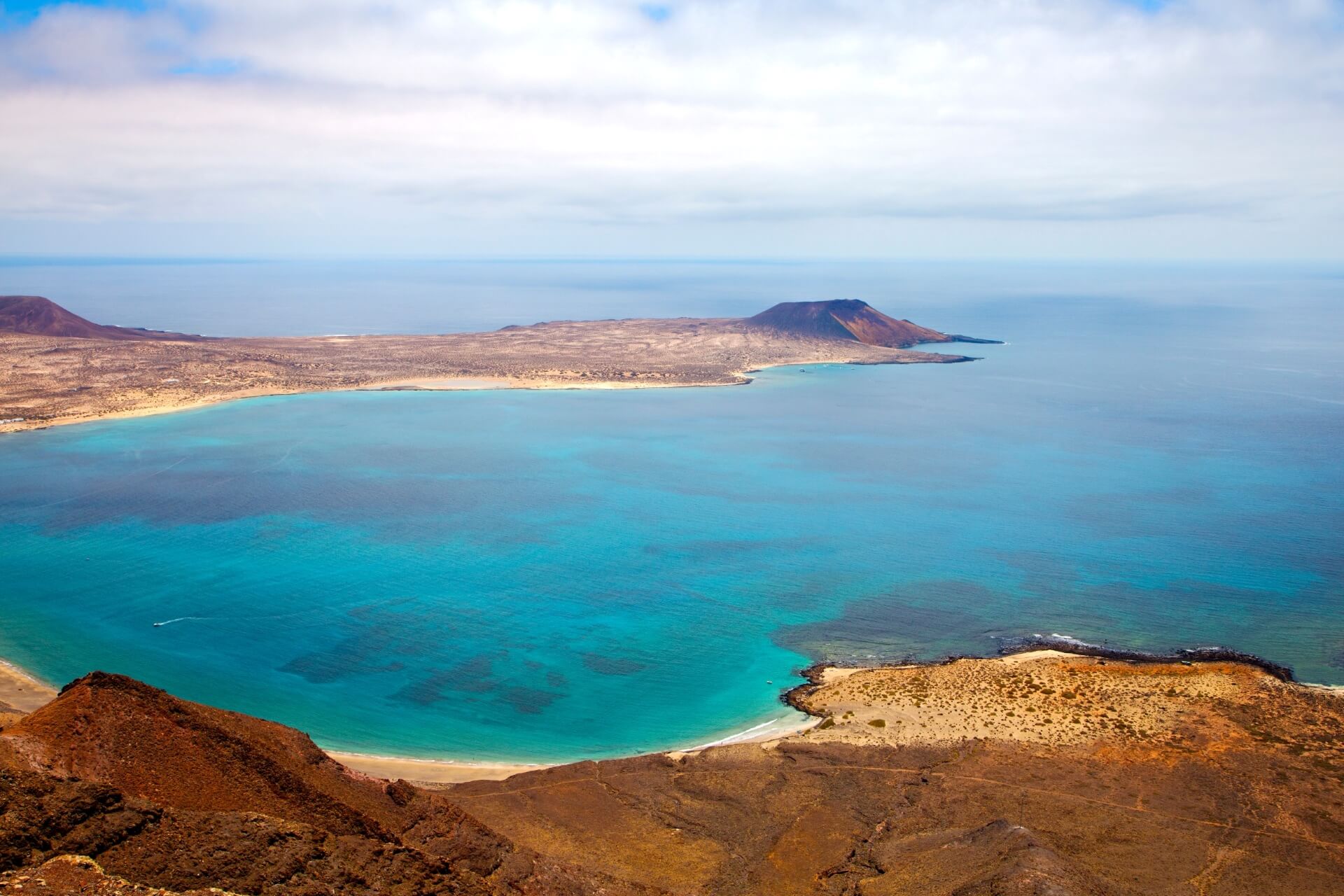
Mention of Graciosa is rarely found in tourist brochures. But those who have seen the red-brown mountains rising against the shining blue ocean will remember this sight forever.
Life here goes on in two settlements — the 19th-century port of Caleta del Sebo and the fishing village of Pedro Barba. A post office, a bank branch, a small supermarket, a bike rental point, and a couple of guesthouses make up the local infrastructure.
Tourists come to Graciosa to admire nature untouched by human activity. It is famous for its endless beaches. On the white sand mixed with fine quartz and basalt, you won’t find sunbeds with umbrellas or soft drink sellers, but you might meet sea lions and turtles.
Graciosa is popular among fishing enthusiasts. The underwater world of the waters is incredibly rich — here live hake, dorado, tuna, mackerel, stingray, moray eel, manta rays, and small sharks. Experts come to catch the blue or white marlin.
After taking a photo with the huge fish, which can weigh up to 60 kg, the lucky ones are required to release their catch back into its habitat. Such are the rules.
Lobos
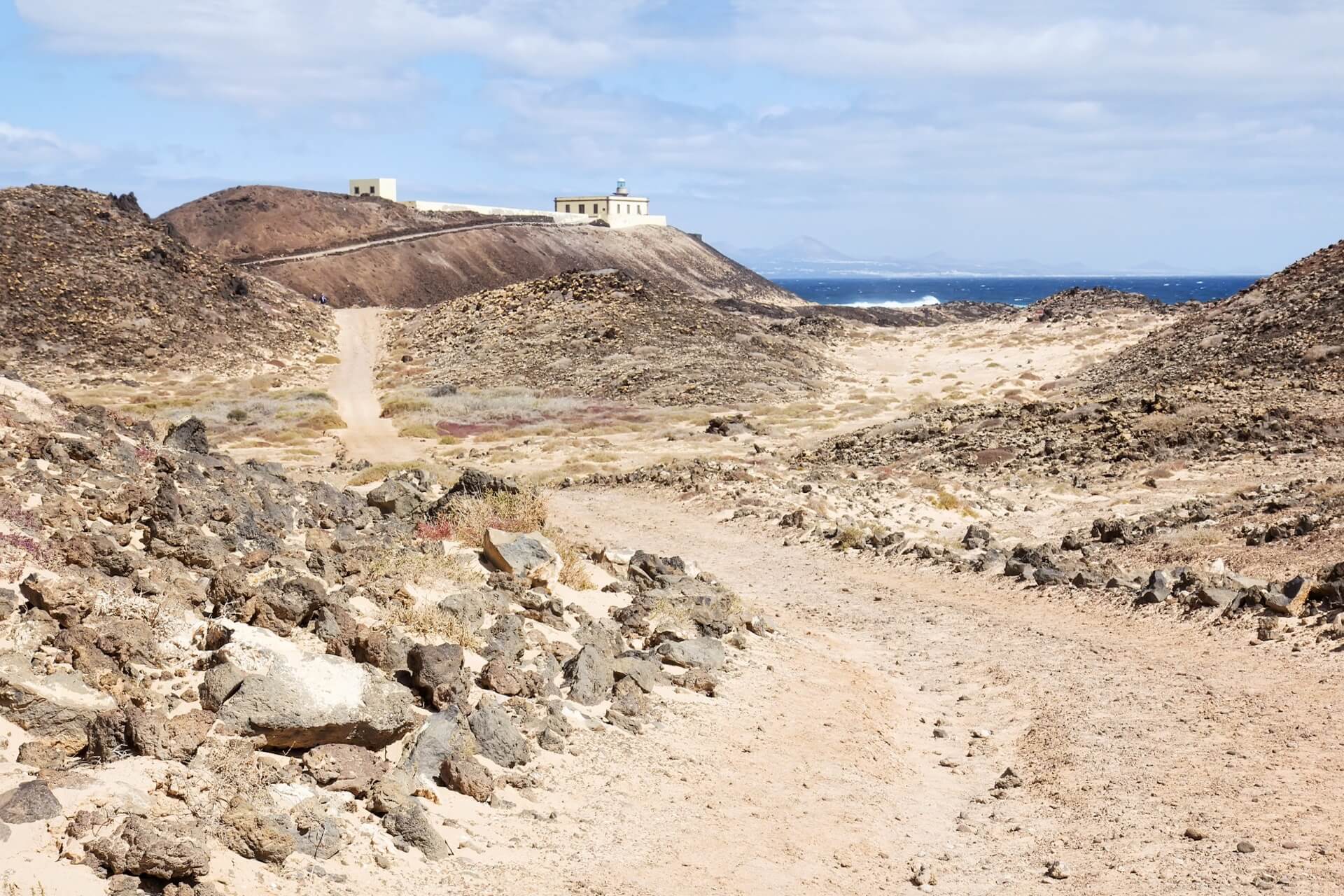
“Wolf Island.” This is the translation of the name of a small piece of land that is part of the Canary archipelago and located in the strait between Lanzarote and Fuerteventura. However, don’t think that Lobos is inhabited by gray predators. Once, seals were called wolves here.
The true owners of the island were exterminated for their valuable meat and fat, but local authorities still have hope of reviving the population of these mammals. People have not lived on Lobos since 1982. Currently, it is visited only by tourists vacationing in the Canaries.
You can get here by a pleasure boat departing from the town of Corralejo (Fuerteventura). Already from the sea, travelers have a magnificent view of the main attraction — the extinct Montaña de Caldera volcano.
It is said that 130 endemic plant species grow here, but finding them is quite challenging. Wherever you look, you will be surrounded only by stones, withered grass, bushy moss, and half-dried trees. Therefore, we recommend a trip to Lobos only for lovers of wild landscapes devoid of lush greenery.
Cíes
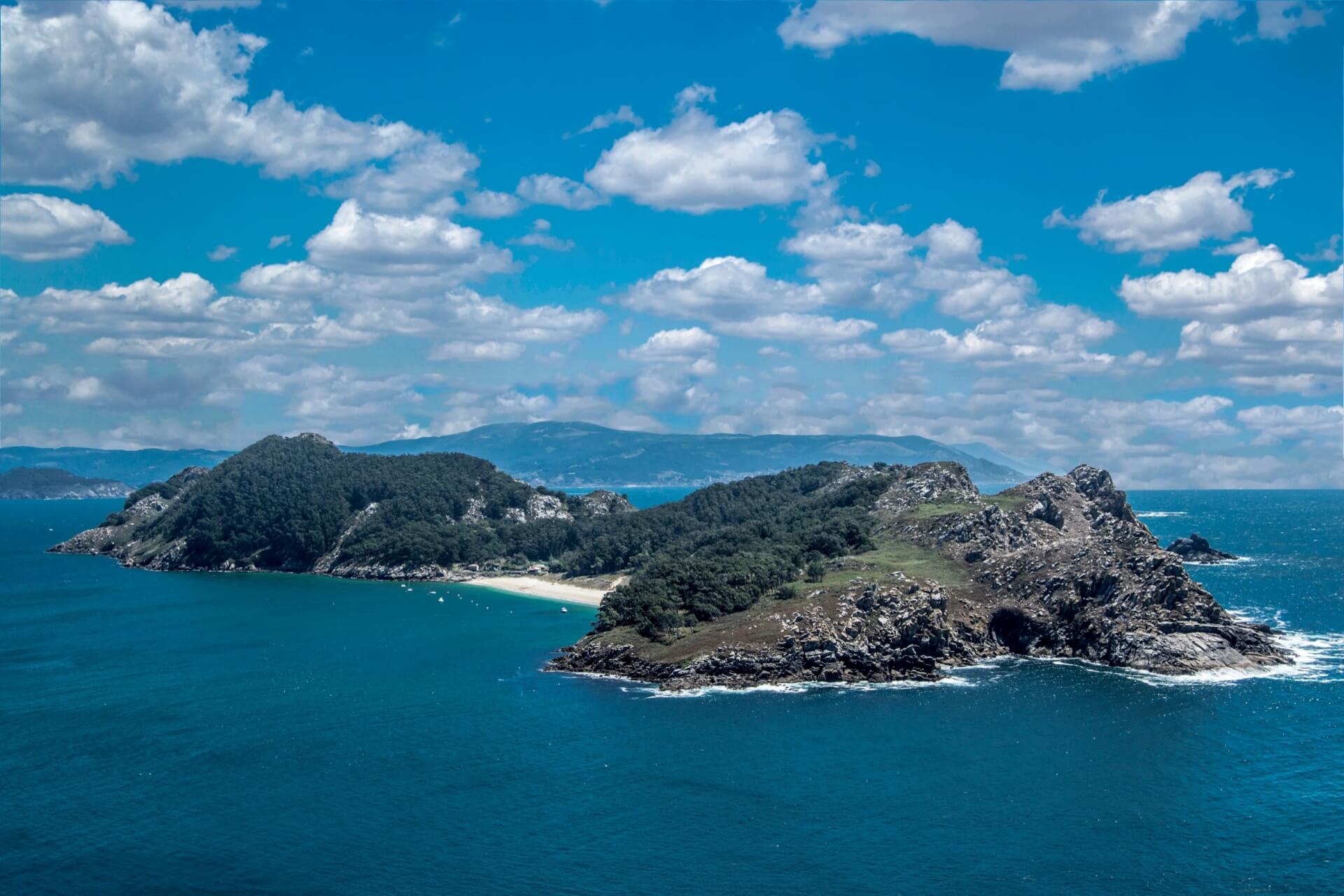
The Cíes archipelago, consisting of the small islands of San Martiño, Monteagudo, and Faro, is located in the autonomous region of Galicia. In 1980, this oasis of wild nature was granted national reserve status.
People come here to enjoy the clean air, photograph the impregnable cliffs, and observe the numerous birds constantly trying to steal tourists’ food. Here, in a land of untouched forests and quiet coves, lies Rodas, one of the world’s most beautiful beaches stretching for two kilometers. The greenish-blue waves of the Atlantic Ocean wash the glossy white sand that can even outshine its Caribbean counterpart.
The coast is framed by dunes where cormorants and seagulls nest. Further up, majestic pines and eucalyptus trees rise to the sky.
Attention! The archipelago can be visited by no more than 2,200 people daily, so you should take care of ferry tickets from the port of Vigo in advance. Don’t delay booking a spot in the Ilias Cies campsite — the only legal tent camp on the islands.
You can move around only on designated trails, and you must take all your trash, including cigarette butts, with you — you won’t find a single trash bin on Cíes.
Ultimate Guide to 5-Star Beachfront Hotels in Tenerife
Best time to visit
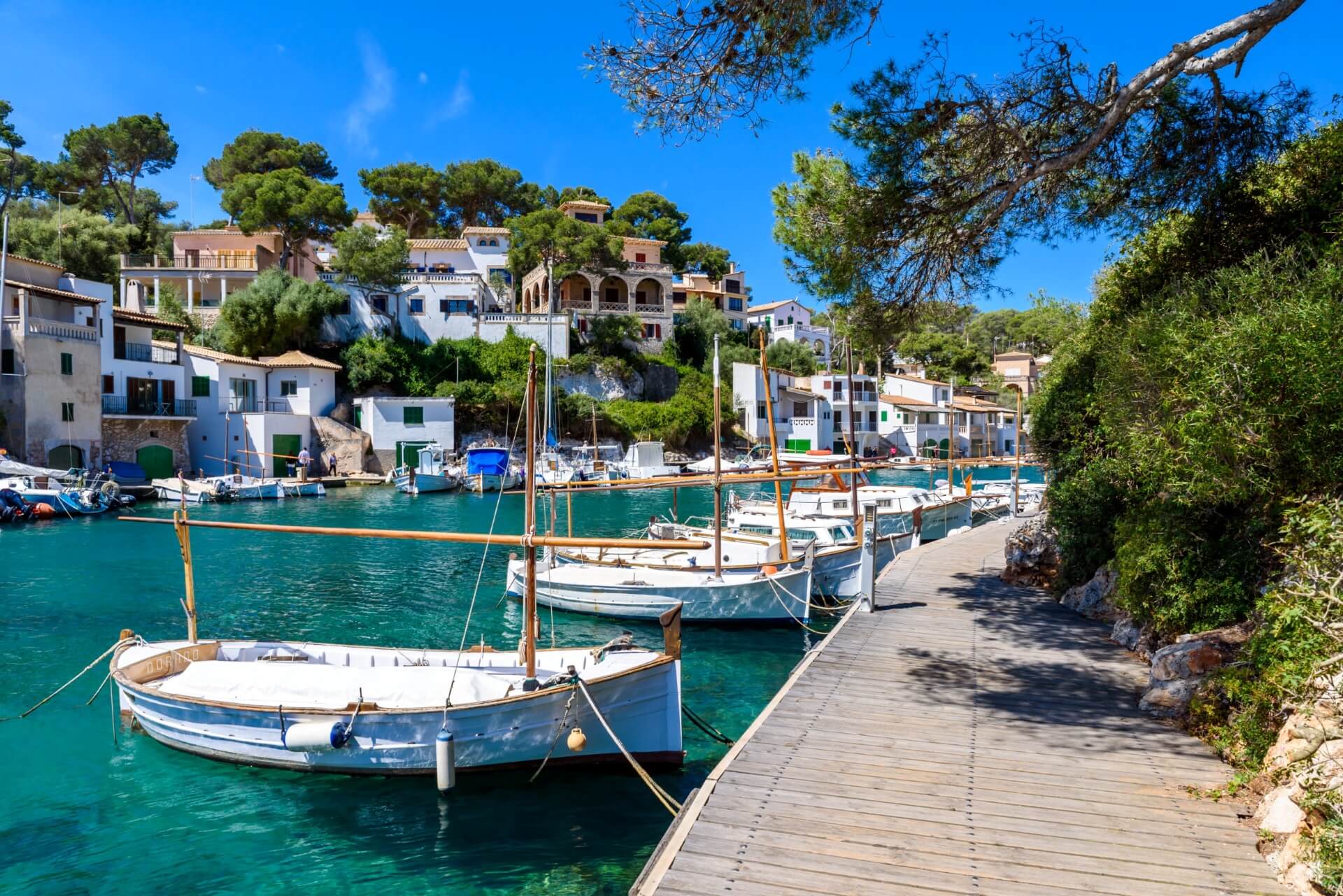
On the Balearic Islands, the tourist season starts at the end of May when the air temperature rises to +25°C, and the water temperature to +20°C. In mid-summer, the sea warms up to +26°C, and the air to +38°C, but the blessed fresh breeze prevents the heat from spoiling the vacation. If you are attracted to sightseeing and your main goal is to get to know the culture and history of the country, plan your trip in spring. In March and April, the archipelago turns into a blooming paradise, and the absence of heat contributes to long walks.
The Canaries are called the “islands of eternal spring.” This definition is well-deserved: the average annual air temperature here is about +22°C. Rain rarely visits this volcanic land, and the mountains provide reliable protection from hurricanes. The comfortable climate is formed by humid trade winds and the proximity of the African Sahara.
In the hottest months — July and August — the thermometer rises to +35°C. The peak swimming season starts in June and lasts until the end of October. During this time, coastal waters warm up to +23°C. However, those traveling in January and February should pack light jackets — during the day, the air temperature rarely exceeds +21°C, and in the evening, it cools down to +15°C.
Which island to choose for a family vacation with children

When planning to spend your summer vacation with the whole family, pay attention to the Balearic Islands with their developed infrastructure, mild climate, and abundant sunshine. For a family vacation with children, head to Menorca — a land of sandy shores and turquoise sea.
This natural paradise also offers plenty of entertainment. Youngsters will be thrilled with the slides at Aquarock and Aqua Center waterparks, while older kids will appreciate the flora and fauna of the national park and horseback riding offered by the Menorca a Caballo center. Mallorca is also a good place for a vacation with children.
Book a hotel at the Alcudia resort, and you’ll have access to the famous 3.4 km Playa de Alcudia beach, known for its clean water, silky sand, gentle slope into the sea, and well-equipped playgrounds.
The Canary Islands are less suitable for a family vacation. The unpredictable Atlantic rarely offers warm surf and sometimes presents surprises in the form of high waves and cold water (in winter, its temperature can drop to +12°C). Therefore, when deciding on a trip to the archipelago with a child, be prepared for swimming only in the pool.
If such a prospect does not bother you, we recommend choosing Tenerife as your vacation spot. Young tourists will surely enjoy the amusement parks. The largest of them, Loro Park, will delight with its botanical garden, huge aquarium, zoo, and spectacular shows featuring parrots, dolphins, and killer whales.

